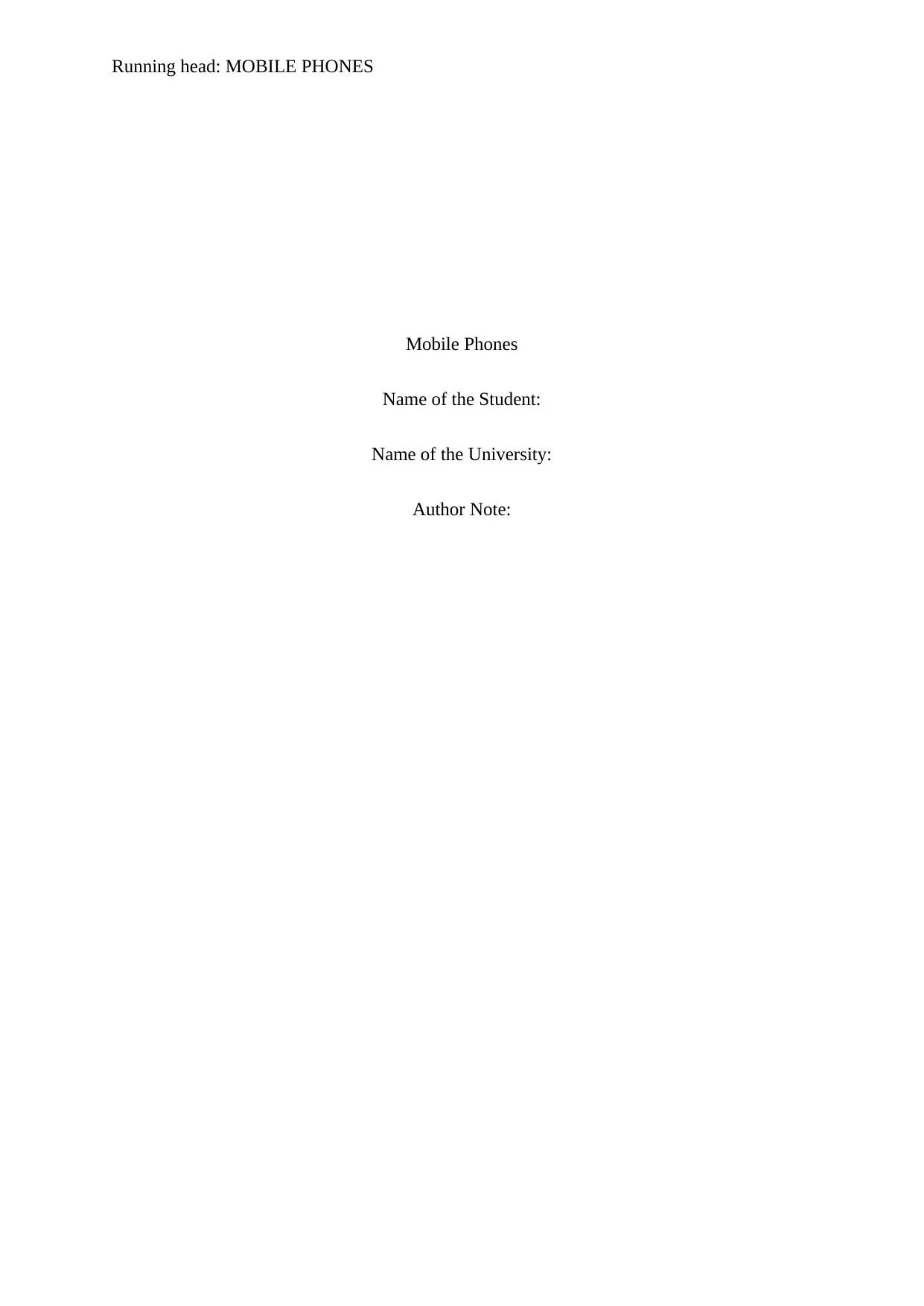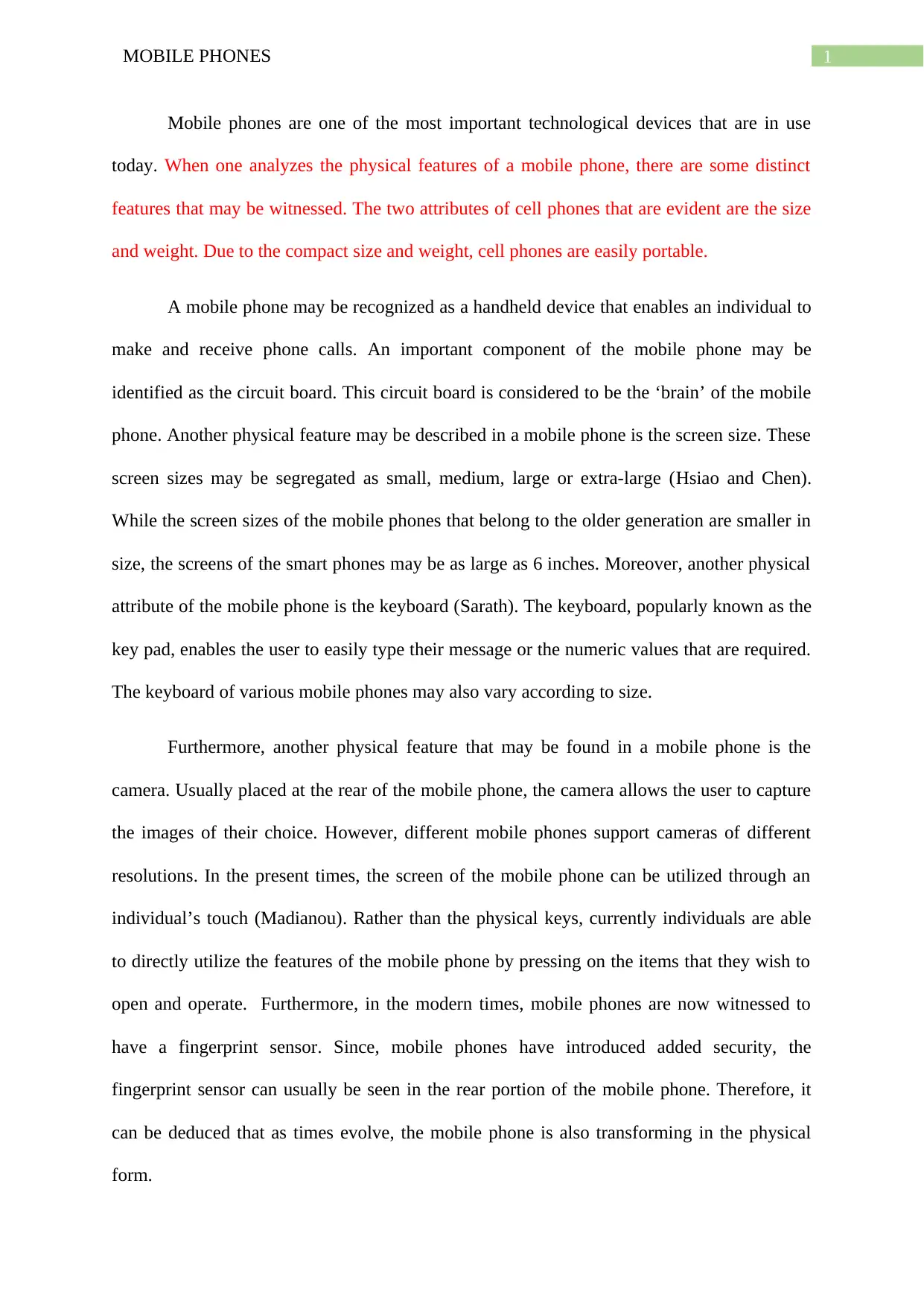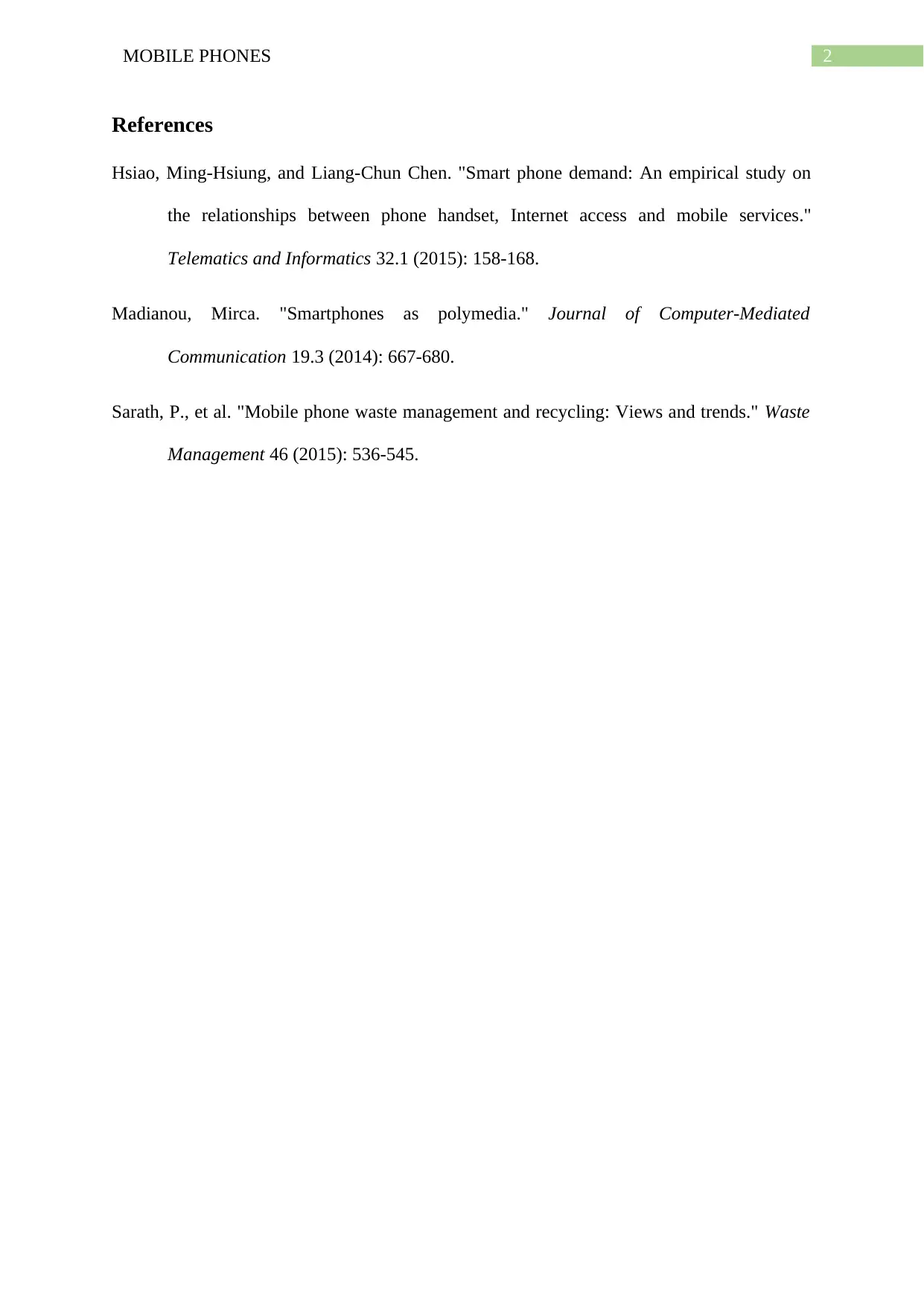Mobile Phone Features: Physical Attributes and Functionality
VerifiedAdded on 2022/10/17
|3
|530
|24
Homework Assignment
AI Summary
This assignment analyzes the physical features of mobile phones, starting with an overview of their compact size and portability. It then delves into the key components, including the circuit board, which is referred to as the ‘brain’ of the phone, and the screen size, which has evolved from small to extra-large formats. The assignment further examines the keyboard, including the keypad, and the camera, highlighting the varying resolutions. It discusses the modern touch screen interface and the integration of fingerprint sensors for enhanced security. The assignment references several sources, including studies on smartphone demand, polymedia, and mobile phone waste management, to provide a comprehensive understanding of mobile phone evolution.
1 out of 3




![[object Object]](/_next/static/media/star-bottom.7253800d.svg)